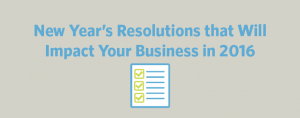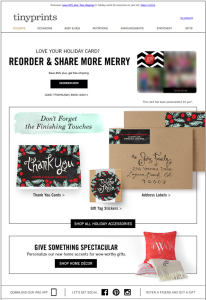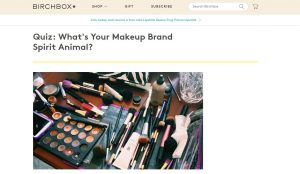If you’re thinking about starting an agency, you need to build strong foundations. Follow these four principles to build a future-ready agency.
The year is 1990. You’ve decided to go into the creative business. You want to make video ads for brands. TV is the future, after all. Didn’t Video Kill the Radio Star barely a decade ago?
You want to be a cutting-edge agency. So your first purchase is a groundbreaking new digital editing system, Avid/1. The cost? Just $ 50,000. For $ 30k more, you can even upgrade the storage to a whopping 4GB.
Throw in a camera rig, office space, studio rent, and you’re down by over $ 150k – without even hiring anyone.
Reading this today, all these figures sound outlandish. But if you’re an agency veteran, you know that these numbers are rather conservative.
Technology has completely transformed the creative business. Costs are down, platforms have changed, and entirely new models of operation are viable today.
If you were building (or rebuilding) an agency in 2020, how would you go about it?
We challenged ourselves with this question over the last few weeks. What approach would we use to build a cutting-edge agency today? What practices and processes would we retain? What would we abandon?
Let’s explore the answers in detail below.
I. Build an Iterative Agency
The agency business used to be built up around the ‘Big Idea’. You’d come up with a major campaign idea and do a big messaging push around it – Superbowl ads, primetime slots, print ads in the NYT. Your goal used to be to let everyone know about the Big Idea.
This approach doesn’t work anymore.
For starters, the costs of creative production have come down drastically. Anyone with a smartphone and an Adobe Cloud subscription can be a “creator”. Campaigns don’t need to be “big” when you can create a new one every day.
The media space is also extremely fragmented. You can’t just buy up primetime slots to mop up all the available attention. You now have to do TV, display, search, and countless social networks, each with their own audience sub-groups.
The ‘Big Idea’ agency has essentially been transformed into the ‘Iterative’ agency.
The ‘Iterative’ agency revolves around iteration and experimentation. Think “lean startup”, but for creativity. Instead of doing a massive push around a single idea, the iterative agency:
- Creates multiple creative assets at a rapid pace
- Deploys them across different channels and tracks their performs
- Prioritizes testing and data
Two decades ago, you’d launch a $ 5M Superbowl ad and wait to see its impact.
Today, you’ll A/B test multiple messages for different audience groups, analyze what each group responds to, and scale that across different channels.
Building an iterative agency requires an altogether different philosophy. You don’t create a single “perfect” creative. Rather, you create something that “works” and improve it based on the audience’s response.
In practical terms, building such an agency means:
- Embracing tools and technology that make rapid creativity possible.
- Minimizing the gap between ideation, creation, and deployment. You want to adopt an agile model where ideas are released to the public as quickly as possible.
- Gathering data and using it for decision making instead of relying on “gut instinct”.
- Abandoning bad ideas and fleshing out promising ones. There is no “perfect” idea – you constantly iterate and improve to get better results.
At a time when software is eating the world, your 2020 agency, too, should work like a tech company. Just as no software product is ever complete – updates and fixes roll out every week – a creative idea should also not be “final”. Keep testing and improving, building out new ideas based on data-backed results.
II. Make Creativity Your Core Offering
If you started an agency two decades ago, your competitors were other agencies.
Today, you’re competing against in-house talent, marketing automation, tech startups, and large consultancies.
The last item on the list is particularly troubling. You might be able to outmaneuver startups and in-house/contractual talent, but how do you fight against the Deloittes and Accentures of the world who already have deep client relationships?
In fact, a 2019 Digiday survey found that on the client-side, 22% of clients planned to shift work from agencies to consultancies.
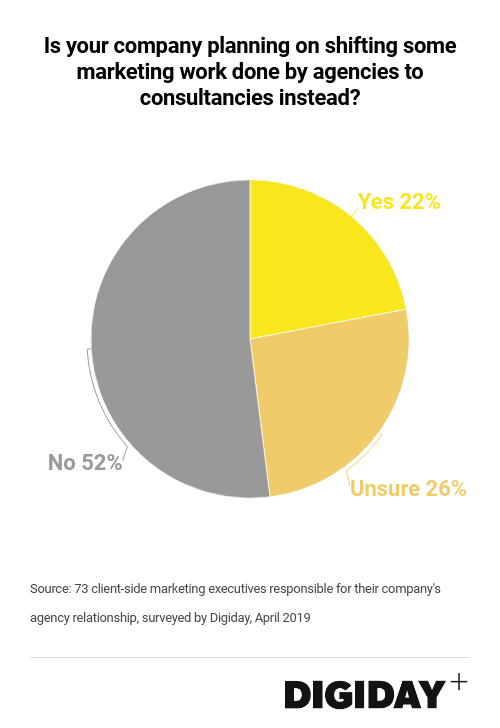
If this statistic makes you pause your 2020 agency plans, you’re doing it wrong.
The agency business is about creativity. Sure, you need to focus on data. And sure, you must be iterative.
But the heart of the business is, and always has been, creative expertise. This isn’t something consultancies can offer – they’ve had to acquire agencies just to add some creative meat to their consulting bones. Nor is it something a tech startup can automate away.
If you want to build an agency in 2020, you have to keep creativity at the heart of your business. Your messaging should be laser focused on what your competitors can’t do – be creative. You can talk about data, automation, Martech, etc., but these should always be tempered by creativity.
Make this the foundation of your agency’s culture and you’ll thrive.
III. Be Built to Scale
The creative business is not conducive to scalable growth. Your core asset – people – are neither scalable nor fungible. Ten designers won’t be 10x more creative than one designer, after all.
This is why so many agencies that find minor success struggle to scale their operations. The approach that led them to be successful – a laser-sharp focus on creativity – does not work when scaled.
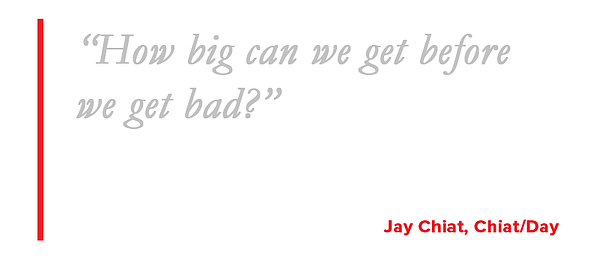
But scale is achievable – the existence of billion-dollar agencies is proof enough. The only requirement is that your agency should be built to scale.
Being ‘built to scale’ describes an approach rather than a goal. A business that’s built to scale has a clear idea of its target market. Its marketing is proactive rather than reactive. It has clear visibility into its operations. And it’s designed around systems rather than ad-hoc solutions.
To build a scalable agency, you have to:
- Identify a market: Too many agencies chase anyone willing to write them a check. While this can yield short-term profits, it gives you neither expertise nor experience in a specific field. Scalable agencies only work with clients that fit their ideal customer profile.
- Create a framework for creativity: Creativity does not have to spur from moments of brilliance. You can create frameworks that organize and channel creativity. Something as simple as an iterative logo designing process can yield better (and scalable) creative results than waiting for inspiration to strike.
- Get visibility into your operations: A major impediment to scalability is the fog of war that surrounds so much of creative operations. If you don’t know what your creatives are working on, you can’t really plan your timelines and budgets. Getting clear visibility into your operations, right from the pipeline of incoming leads to the status of individual milestones, can make it much easier to plan your growth.
- Organize institutional data and practices: As agencies grow, they produce a lot of data. Individuals will develop their own frameworks and processes. Managers will create their own systems. If you want to scale, you need to collect and organize this information. This will help future hires fit into the agency better.
- Develop systems for everything: How do you acquire new leads? What happens when you win a deal? What details do you include in every creative brief? A systems-focused approach will help you find clear answers for such questions instead of relying on ad-hoc solutions.
If you’re building an agency in 2020, it must be organized from the get-go to be scalable.
IV. Embrace Technology
What does “creativity” mean to you? A logo design? A blog post? A TV ad?
Will this definition hold true in the next ten years?
Likely not.
Technology is changing every aspect of our lives. We’ve gone from reading static print ads to interactive web pages to augmented reality – all within the span of a generation.
The point where creativity ends and technology begins is increasingly blurry. If you’re writing ad copy on MS Word, it’s clear that technology is only assisting your creativity.
But when you’re dealing with AR/VR, IoT, apps, etc. the clever use of technology is creativity.
If you’re building an agency in 2020, it’s crucial that you embrace technology.
There are two aspects to this:
1. Technology as a business tool
There’s another aspect of technology that agencies don’t always embrace: as a business tool.
Often, agencies will either ignore technology (like using pen and paper time tracking sheets) or stick to outdated tools out of sheer habit (such as using Excel to manage projects).
The result is usually the same: poor productivity, disorganized operations.
If you’re building an agency in 2020, you have no excuse to not use specialized tools. Excel and email might be accessible, but they’re also incredibly limiting. Anyone who has tried to dig through 50 email threads to find the one issue that needs fixing will agree.
Embrace better tools and your agency will already be on better footing than most of your competitors.
2. Technology as a creative tool
Practically every agency already uses technology in the creative process. You use Photoshop for graphic design, Pro Tools for background scores, Final Cut for videos, and so on.
Where many agencies fall behind is in using technology as the creative process.
Think about a delightful VR experience. This experience is imagined by a designer and brought to life by a programmer. There is no point where designer’s work ends and the programmer’s begins. Both technology (coding) and creativity (designing) have to interact closely to make the experience successful.
In the coming decade, the best agencies won’t be the ones that can write a great ad copy. They’ll be the ones that can write a great ad copy and turn it into an interactive mobile experience.
To build such an agency, you have to:
- Create a tech-oriented culture. If you see developers as just billable labor, you’ll never be able to attract the kind of talent that can create groundbreaking digital experiences. Develop a culture where developers are prized. Showcasing your tech achievements, contributing to open-source projects, etc. are some ways to do this.
- Make everyone a technologist. Everyone in your agency doesn’t have to know how to code. But everyone should know the fundamentals of technology. Simple things like how the web works, how computers parse instructions, etc. can help your creatives create better digital experiences.
- Focus on creativity. You can’t compete against Big Tech in terms of compensation. But you can win over developers by offering them the chance to work on exciting, creative projects – things they might not get to do at Google or Facebook. Every technologically difficult project you take on won’t just help you win new clients, but also hire better developers.
Essentially, you have to start seeing your agency as a tech company where your key product is “creativity”. If you can do that successfully, you’ll never have to worry about hiring tech talent.
Over to You
Building an agency in 2020 is no easy task. So much of the agency landscape has changed in the last two decades. Modern agencies have to embrace technology, develop processes, and push their creative boundaries.
Business & Finance Articles on Business 2 Community
(82)
Report Post
